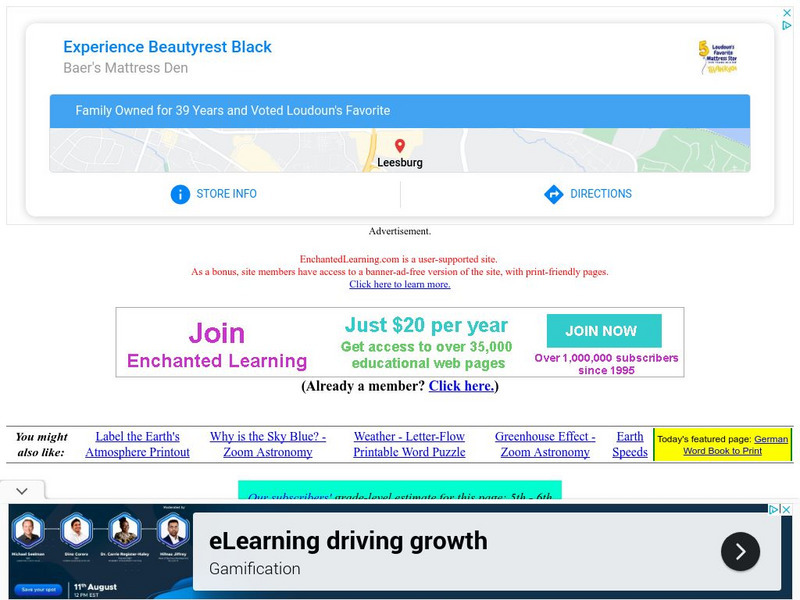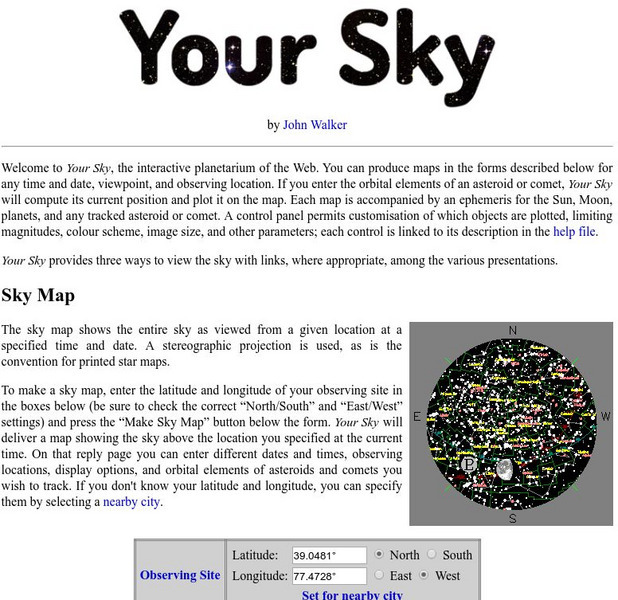National Endowment for the Humanities
Neh: Edsit Ement: Galileo: Revealing the Universe
For this lesson plan, learners will consider "Galileo: Revealing the Universe." The plan includes worksheets and other student materials that can be found under the resource tab.
Texas Instruments
Texas Instruments: Solar System
This activity is designed to assess the comprehension of concepts related to the planets and other astronomical bodies in the Solar System.
American Museum of Natural History
American Museum of Natural History: O Logy: Stuff to Do: Stargazing
Get started on the road to becoming an expert stargazer by following these recommendations for identifying stars, planets, and constellations. Includes an example of a journal that can be used as a record of your investigations.
American Museum of Natural History
American Museum of Natural History: Ology: Astronomy: Are You Cut Out for Mars?
Do you have what it takes to go on a space mission to the Red Planet? Think you can handle it? Take this quiz to find out!
Enchanted Learning
Enchanted Learning: Zoom Astronomy: The Earth's Atmosphere
Site provides information on the Earth's atmosphere as well as offers additional information about Earth.
University Corporation for Atmospheric Research
Ucar: High Altitude Observatory: Tycho Brahe (1546 1601)
This site contains information about Brahe's contributions to astronomy, and also discusses his planetary model.
Concord Consortium
Concord Consortium: Stella
Students act as astronomers, studying stars in a patch of sky in our own galaxy. Using simulated data from spectroscopy and other real-world instrumentation, students learn to determine star positions, radial velocity, proper motion, and...
Fourmilab Switzerland
John Walker: Your Sky
You can produce sky maps for any date and time, viewpoint or observing location. See your sky map, horizon view, or track an asteroid or comet on this highly interactive site.
NASA
Electromagnetic Spectrum: Ultraviolet Waves
Ultraviolet (UV) light has shorter wavelengths than visible light. Though these waves are invisible to the human eye, some insects can see them. The specific wavelength values are given. Uses and applications of these waves are explained.
University of Illinois
University of Illinois: Stars and Constellations: White Dwarf Supernovae
Discusses the formation of the white dwarf and the role this star plays in the formation of a white dwarf supernovae.
University Corporation for Atmospheric Research
Ucar: High Altitude Observatory: Aristarchus of Samos (310 230 Bc)
A brief biography and discussion of Aristarchus' theories provided here.










